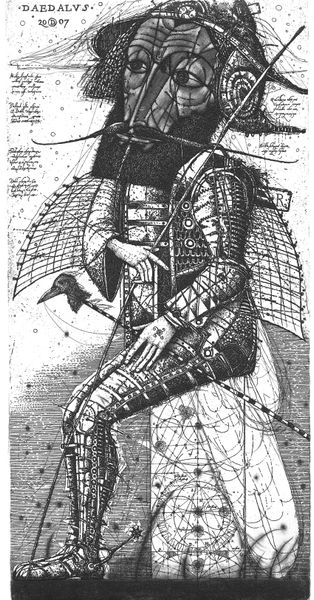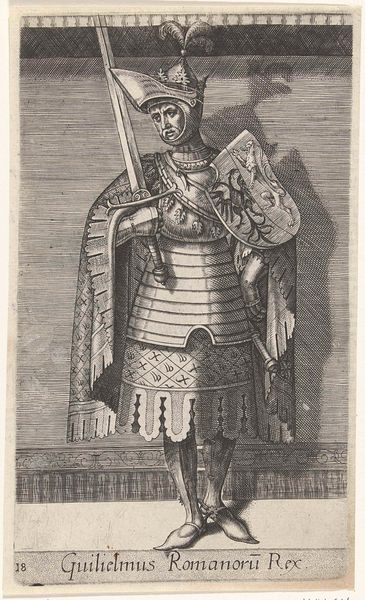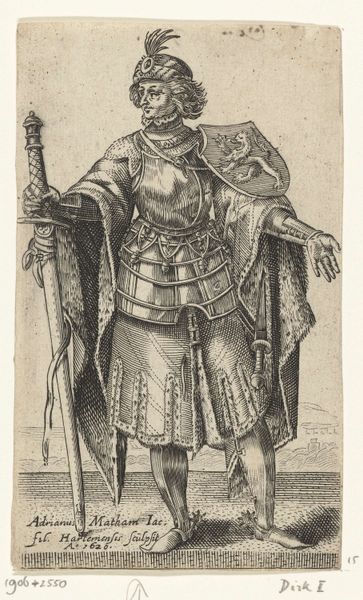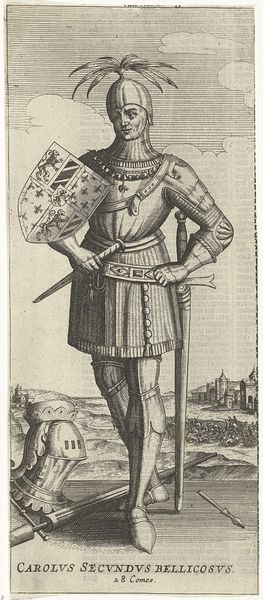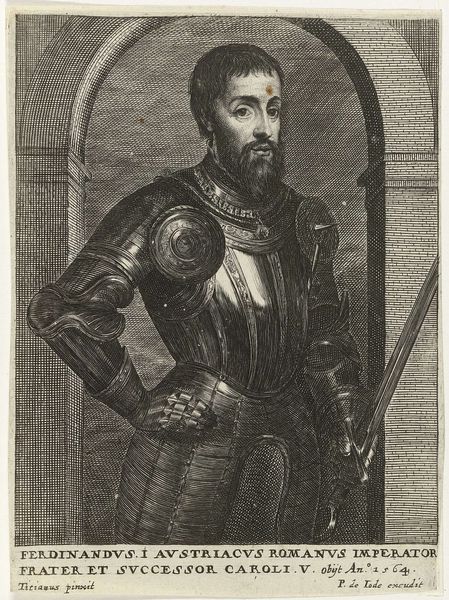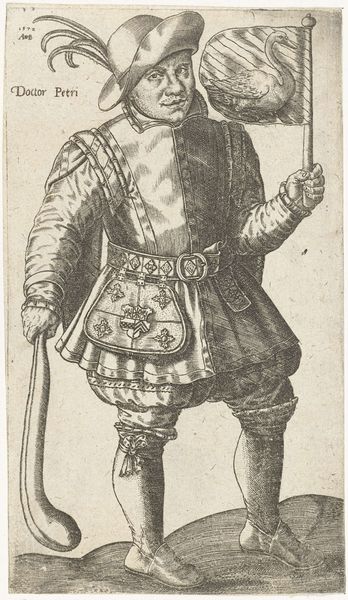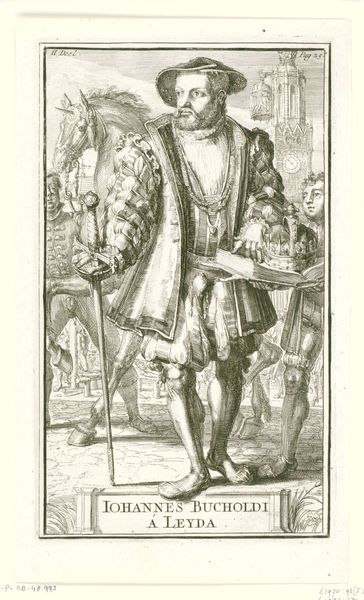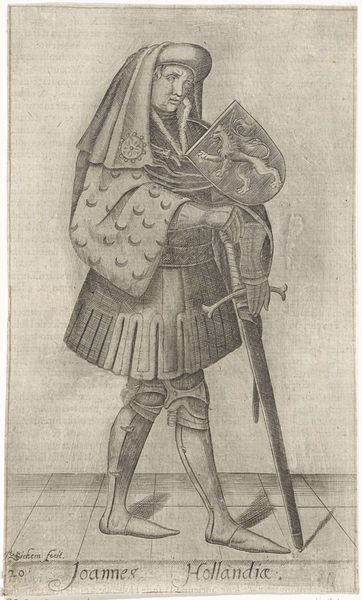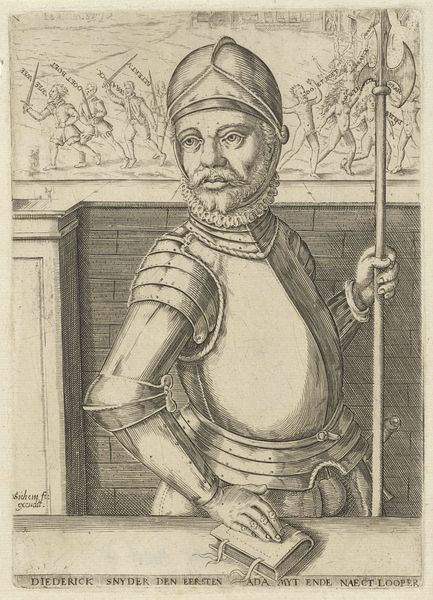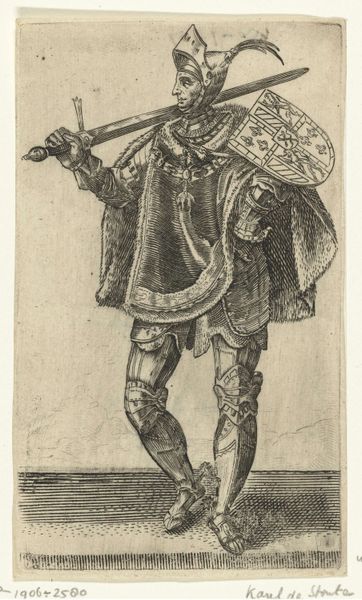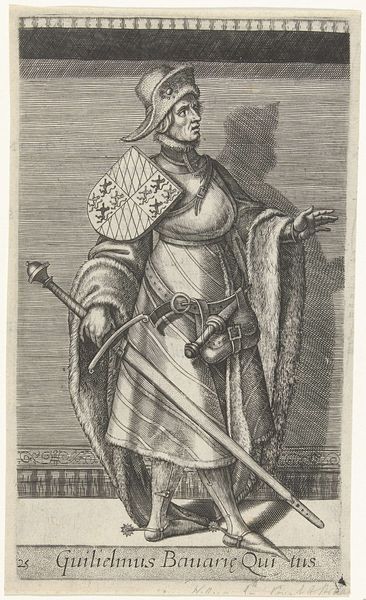
drawing, pencil
#
portrait
#
drawing
#
medieval
#
figuration
#
pencil
#
line
#
history-painting
Copyright: Public domain
Curator: Here we have a drawing by Jan Matejko entitled "Konrad I of Masovia". The medium appears to be primarily pencil on paper, showcasing impressive line work. What strikes you most about this portrait? Curator: Immediately, the sternness in Konrad's gaze projects power. Considering his role in Polish history, specifically inviting the Teutonic Knights, it stirs complex reflections on authority, religious conflict, and the long shadow of colonialism. Curator: Indeed. Look closely at the texture. Matejko's skill in rendering the armor is remarkable. Consider the sheer labor involved in crafting chainmail—linking individual metal rings, a process demanding intense human effort and specialized tools. This speaks to medieval metalworking as a craft rooted in bodily skill. Curator: Absolutely, and consider that this material representation of Konrad – a symbol of medieval rule – wasn't created during his reign but much later. Matejko, in his drawings, often engages with pivotal moments in Polish history, imbuing them with nationalistic sentiment during a time of partition and cultural suppression. Who gets remembered, and how, is always a political choice. Curator: Note the meticulous attention to detail in each plate of armor. It's not merely decorative; each element has a practical function. Think of the smith, selecting and shaping raw materials like iron ore, understanding its properties to protect the wearer effectively in battle. Curator: And while the armor appears functional, doesn’t it also serve as a tool to intimidate? Visuals play an important role here. Konrad's garb would have signaled invincibility and solidified hierarchical social relationships. It invites one to question: what kind of agency did individuals in this power structure possess? Curator: It's compelling how Matejko employs a relatively simple material like pencil to achieve this level of realism, bridging past and present through manual artistry. Curator: Reflecting on this image, I realize that our roles in representing and analyzing the past aren’t neutral. These are often selective narratives which must be re-examined through multiple lenses to understand the long echoes of history. Curator: Yes, examining its physical and social contexts encourages new insights into this drawing by Matejko.
Comments
No comments
Be the first to comment and join the conversation on the ultimate creative platform.
